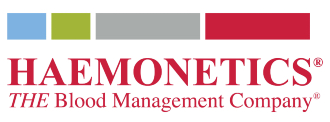|
What is Trauma Anesthesia? What is trauma anesthesia? The resuscitation of the trauma patient in extremis requires a refined approach including expertise in airway management, vascular access, blood product utilization and regional anesthesia as well as excellent human factors skills in communication. The aviation analogy fits trauma anesthesia very well... except that the plane the trauma anesthesiologist is flying has a hydraulic leak, the airframe is cracked and they’re flying at night in bad weather. As more anesthesiologists joined the discussion it became apparent that a platform other than email would better accommodate progress. Josh Tobin reserved a room at Anesthesiology 2011 in Chicago to discuss the future of the group. The email group of approximately 20-25 people met for the first time in person and welcomed leaders in trauma anesthesia; including Albert Varon from the Ryder Trauma Center, and Jerry Cohen, then President of the American Society of Anesthesiologists. The Chicago meeting acknowledged the strong interest in trauma anesthesia and resolved to continue development of the group at follow on meetings. Two months later in December 2011, then nascent society met at the Washington State Society of Anesthesiologists (WSSA) annual meeting in Seattle. The University of Washington and Harborview Medical Center were well represented; including anesthesiologists James Burkman (then President of the WSSA), Peter Dunbar, Sam Sharar, Monica Vavilala as well as many others. Tough cases offer opportunities for varied approaches to anesthetic care. In the early days of TAS, a GoogleGroup discussion platform served as a resource for members to ask trauma anesthesia colleagues from around the US for insights on challenging anesthetics. A member could post a question on the GoogleGroup for an upcoming case and have several responses from around the country in the span of 20-30 minutes. TAS was an early adopter of web-based platforms to inform clinical care with this nearly real-time “online consultation”. As the society matured through 2012-2013 a formalized corporate structure was needed. Carin Hagberg and her husband (an attorney) graciously guided TAS through the process of filing Articles of Incorporation. TAS became incorporated, had a Board of Directors, and had a corporate structure that ensured rotation of key leaders to continuously bring a fresh perspective to the organization. At Anesthesiology 2013 in San Francisco, TAS hosted its first dinner featuring a discussion on blood product utilization during trauma resuscitation by Jerrold Levy. Also in 2013, several members of TAS collaborated on “A Checklist for Trauma and Emergency Anesthesia”, published in Anesthesia & Analgesia. This checklist served as a starting point for the evolving discussion of resuscitation of the trauma patient. A version of the checklist has been adapted into the Ryder Cognitive Aid as well as by the U.S. military. Dr. Tobin concluded his term as President and stepped aside as Marc Steurer filled the role of President 2013-2016. Marc continued to push TAS forward with development of a TAS website as well as partnership with Anesthesia & Analgesia (now the official journal of TAS). As Mike Murray assumed the role of President in 2017, TAS was well positioned for leadership in the larger anesthesia community and became a component member of the American Society of Anesthesiologists. In 2022 TAS was sponsoring resident research grants and featuring a “Pro-Con” debate at the annual Anesthesiology meeting under the leadership of President Arman Dagal. As James Cain assumed the role of President in 2023, TAS had grown into a robust organization of approximately 300 U.S. & international members. Not too bad for a GoogleGroup... |





